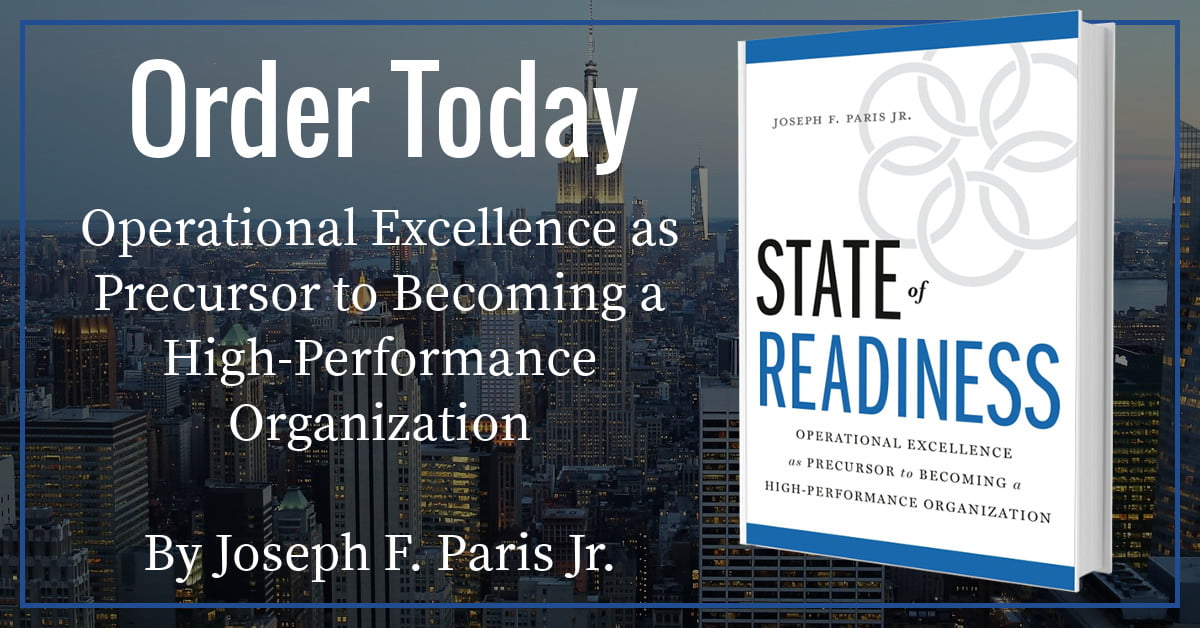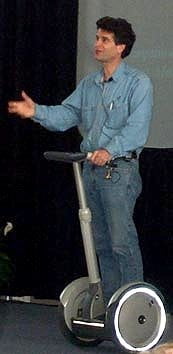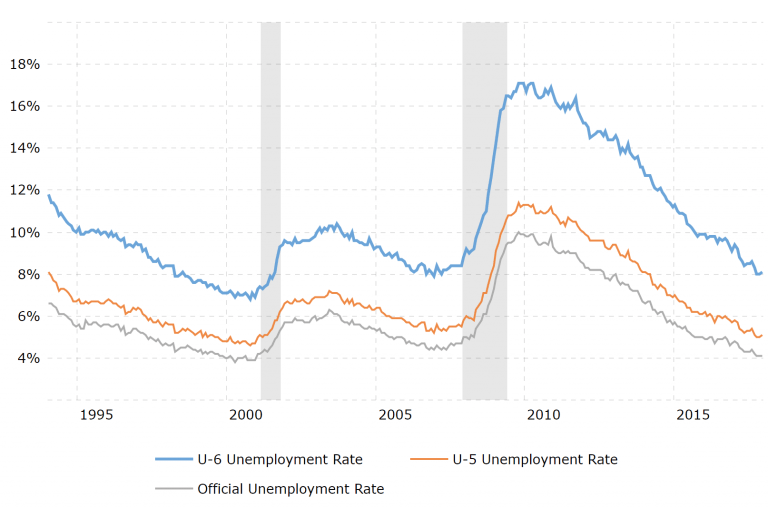The “Stone Age” didn’t end because they ran out of stones
Charles Darwin in his book, “The Origin of Species” (read full PDF book here) proposed that evolution occurs with the introduction of challenging or adverse circumstances on a population of a species such that only those who are able to adapt (either by natural selection or by action) thrive (or even survive).
For instance, the Shark evolved to be Nature’s eating machine. It must constantly swim, never “sleeping” as we know it, so that water is always flowing over its gills. If it ever stopped swimming, it would suffocate. Without a state of rest, it needs to feed constantly. To ensure it is always able to eat, it continually generates rows upon rows of teeth so that as one is lost, another appears in its place.
Take any number of animals and plants that have adapted to live in the desert; animals such as the Great Basin Spadefoot, which remains dormant deep in the ground until the rains fill the dried ponds so that it might feed and reproduce – or the Brine Shrimp whose eggs remain dormant until revived when the proper environmental conditions exist so that they can hatch and complete their life-cycle.
Most of the unique and seemingly inherent behavior designed for survival is called “instinct”. Behaviors such as birds building nests for shelter, Canadian Geese migrating south for the winter, Salmon returning to their place of birth to spawn, or Wildebeests moving across the Serengeti in herds; all are behaviors with which these animals are born and not taught.Such natural selection and the resultant evolution have taken place so that the species might survive.
Compare this with cognitive behavior, that which is learned, such as language, problem solving and decision-making. This higher order of behavior (also referred to as “animal cognition”) is not restricted to human beings – dogs can be trained to recognize voice commands, dolphins can be trained to perform feats, and apes can be taught sign language for basic communication.
So why did the Stone Age end?
Most certainly, it did not end because early humans exhausted the supply of stones.
And since the Stone Age was followed by the Bronze Age – ushering in all the benefits of working with metals, such as the ability to more easily form tools – I am also certain that the transition from Stone to Bronze was more abrupt than incremental. Undoubtedly, working with Bronze (which is an alloy of Copper and Tin) for the first time would have definitely been a “thinking out of the box” moment for early man.
Just imagine the scene; there is a master stone-worker in the tribe. This person has spent their entire life finding the appropriate stones (like flint, for example) and working them into some useful shape (much as a sculpture would fashion a boulder into some work of art). What are the odds that this person would have the imagination to take raw copper ore from a vein think of heating it to melting, and then fashioning it into some useful tool? How much of a stretch would it be to add tin to form bronze?
Perhaps a more likely scenario would be the “cook” containing or focusing a fire by surrounding it with rocks and noticing one of the rocks had changed shape from the heat – then repeating the process on purpose and making the first tool for flipping a “brontosaurus burger” without burning his hand. Perhaps he even uttered the stone-age word for “Eureka” – which we all know is “Yaba-Daba-DO!”
Dag Nabbit! TELL ME – why did the Stone Age end?
In a word, “Innovation”… and innovation is how all “ages” end…
The Stone Age gave way to the Bronze Age, and the Bronze Age gave way to the Iron Age…
- The Age of Greece gave way to the Age of Rome.
- The Age of Sailing Ship gave way to the Age of the Steamer Ship which gave way to the Age of the Great Ocean Liners which gave way to the Age of Transatlantic Flight.
- The Age of stagecoach gave way first to early rail, then to the automobile.
And so it goes…

In each case, the artisan of the former age was not the creator of the latter. Each new age was heralded by an outsider – someone not directly involved in the industry of the previous age, but a rather unattached “free-thinker”.
Take the move from Sailing Ship to Steamer Ship, for instance…
The Steam Engine dates back to the First-Century AD and was a largely experimental device with few practical applications due to the inefficiencies inherent in early design, materials available for construction, and fuel. It was not until the second half of the 1700’s that James Watt, a Scottish Mechanical Engineer, developed a version of the steam engine which was commercially viable.
Across the Atlantic in the United States in 1787, a clockmaker and engineer named John Fitch – who had no experience with ship building or the sailing industry – was the first person to successfully integrate a steam engine to power a ship named “Perseverance”. The first ships made of steel (the “ironclads”), whose technology paved the way for the engineering and scaling of the great ocean liners, were not created until the mid-1800’s during the American Civil War.
This pattern of a paradigm shifting from the old to the new – where the new is ushered in by people detached from the old – is repeated time and again. More often than not, the new is made aware right under the noses of the old and the old fail (or refuse) to see it – much to their detriment.
Not “A Kodak Moment”…
Innovation is a double-edged sword in that what is old and ubiquitous is destroyed by what is new and unknown – and usually at great speed and unnoticed (even if directly under the noses of the old).
Let’s take the history of the Eastman Kodak company (usually referred to as just “Kodak”). Formed in 1889 and originally called the Eastman Company, it grew into an industrial powerhouse and was added to the Dow-Jones Industrial Average (DJIA) in 1930. At its peak in 1975-76, Kodak sold 90% of the film and 85% of the cameras used in America.
And it is at this peak, in 1975, that Kodak scientist Steven Sasson – who was an electrical engineer and not a chemist or a photographer – invented the technologies which are the foundation of digital photography. The technology of digital photography was further developed in mid-1980 by other Kodak scientists.
However, these new technologies – and the potential of the new markets which might be created – were not embraced by the leadership of Kodak. In fact, they were repressed.
You see, it is common belief that that Kodak is a photography company – and this would be largely inaccurate. Kodak is a chemical company – and the chemicals that the company produces are designed to service the photography industry.
But there are no chemicals necessary in digital photography. With billions upon billions invested in chemical infrastructure, the prospects of a marketplace which did not leverage this investment were anathema to Kodak. As such, the leadership of Kodak would have nothing to do with the development or promotion of digital photography – until it was too little, too late.
Innovation had occurred, the “genie could not be put back in the bottle”, and there was no going back.
Epilog: In 2004, Kodak is dropped from the DJIA and dropped from the S&P 500 index in 2010. In 2012, Kodak files for Chapter-11 Bankruptcy and begins selling every asset and patent in its portfolio to satisfy creditors and to exit Bankruptcy. But without any assets or intellectual property, the kind of company Kodak will be at the end of the Bankruptcy process is probably not much. If only Kodak had given the Outlier a second look – for sometimes outliers are anomalies, and sometimes they are an indication of things to come.
The Fine Line between Genius and Insanity
Some of the most famous “outliers” include: Albert Einstein (whose teachers thought he would “never amount to much”); Walt Disney (who was fired for “lacking imagination and not being creative enough”); and even The Beatles (rejected by Decca Records because “we don’t like their sound and they have no future in show business”).
In each case, these “outliers” were summarily dismissed by the “inliers” – those inside their respective industries, in a position of authority, and having the ability to pass judgment.
In 1993, International Business Machines (IBM) was in the midst of a near-death experience when it’s Board decided to dismiss its then born-and-bred IBM CEO and Chairman, John Akers – replacing him with outlier Lou Gerstner, who was President of Nabisco at the time.
When IBM first made the announcement, Wall Street howled; “What did a man who made Oreo Cookies know about computers?!” The response was, “Absolutely nothing”.
This was the genius of the Board’s decision. Gerstner knew nothing of IBM’s nostalgia, business strategy, or corporate culture. He had no friends at IBM and thus no mixed loyalties. He did not have to worry about preserving ties to the company’s legacy. He was able to leverage his being an outlier to objectively evaluate and pass judgment on the entirety of the IBM organization and fashion a path to the future unhindered by IBM’s past and its traditions.
As such, he transformed IBM from being a company whose main business was selling “computer hardware” into a “business services” company. He was the perfect man, with the perfect background, in the perfect situation – and he performed perfectly.
In contemporary times, Peter Diamandis became an “outlier facilitator” when he founded the “X-Prize Foundation” in 1994. Diamandis (who earned a BS Degree in Molecular Biology and MS Degree in Aeronautics and Astronautics from the Massachusetts Institute of Technology or “MIT”, and a MD from Harvard University’s Medical School) recognized that most organizations become myopic and inbred over time, thus creating only incremental change and that true transformational change and innovation is more likely to come from outside an ecosystem than from within.
There are other X-Prizes still to be claimed, including an Automotive X-Prize (for the first fuel-efficient automobile to get 100mpg or more), the Tricorder X-Prize (inspired by StarTrek, the first to create a portable medical diagnostic device), and several others.

Then there is the story of Dean Kamen who was born in New York in 1951, and the son of an illustrator for the comic books Mad Magazine and Weird Science. Like many outliers such as Bill Gates (founder of Microsoft and drop-out of Harvard), Steve Jobs (co-founder of Apple and drop- out of Reed College) and Mark Zuckerburg (founder of Facebook and drop-out of Harvard), Kaman is a drop-out of the Worcester Polytechnic Institute.
Kaman is most well-known as the inventor of the Segway – the personal transportation device powered by electricity and self-balancing.
But my personal belief is that Kamen will be best remembered for the “Slingshot”.
Although the Earth is mostly covered in water, only 1% of the water is safe to drink with the remaining being either too salty, or too polluted for human consumption.
Kamen’s “Slingshot” is about the size of a dorm-room refrigerator and can produce 250 gallons a day (enough for 100 people) from “just about anything that looks wet”, including; polluted river water, saline ocean water and raw sewage.
The current version of the Slingshot uses a Stirling Engine and requires the burning of a fuel to generate the heat necessary for it to work. Undoubtedly, the adaptation of solar power instead of fuel would increase the attractiveness of the units even more.
Although present units are short-run prototypes and are naturally expensive, Kamen believes that the commercial production of Slingshots can be manufactured for between $1,000 to $2,000 per unit – bringing the prospects of inexpensive and easily available clean water to those in need everywhere in the world. With pressures for clean water building everywhere, this device promises to be a real “game-changer”.
The Age of Carbon
George Bernard Shaw, Irish Playwright and co-Founder of the London School of Economics, once wrote; “The reasonable man adapts himself to the world; the unreasonable one persists in trying to adapt the world to himself. Therefore all progress depends on the unreasonable man.”
The “Age of Carbon”, where the primary fuel is Carbon-Based, was ushered-in with the coal-fired machinery of the Industrial Revolution (which started in the mid-1700’s) and is with us still today. It is important to keep in mind that, before the Industrial Revolution, the primary fuels that were used were wood, peat, and whale-oil (which were limited in both availability and latent energy).
Petroleum-based fuels (including coal, also commonly referred to as “Hydrocarbons” or “fossil fuels”) did not come into wide-spread use until the mid-1800’s with the invention of Kerosene (followed by Diesel Fuel and Gasoline in the late 1800’s) and was not used to power vehicles until the early 1900’s as motor-driven vehicles became increasingly ubiquitous.
So if you consider that civilized man has walked the earth since at least the time of Mesopotamia in 3100BC (roughly 5,000 years ago) and fossil-fuels have been in wide use for only the past 150 years and are widely and economically available still, it is not unreasonable to expect that there is still some runway left in the Age of Carbon.
But like the Stone Age, which did not end because they ran out of stones; the Age of Carbon will not end because the sources of Carbon-based energy are exhausted. The Age of Carbon will end because something better displaced it.
What that “something” may be is still unknown. It might be solar power, or wind power, or nuclear power. It might be something completely new. It might even be combinations thereof making the paradigm shift from one source to many sources – and not from one to a sole replacement.
But don’t be surprised if the discoverer or inventor who ushers in energy’s “new age” is an outlier.
About the author

Paris is the Founder and Chairman of the XONITEK Group of Companies; an international management consultancy firm specializing in all disciplines related to Operational Excellence, the continuous and deliberate improvement of company performance AND the circumstances of those who work there – to pursue “Operational Excellence by Design” and not by coincidence.
He is also the Founder of the Operational Excellence Society, with hundreds of members and several Chapters located around the world, as well as the Owner of the Operational Excellence Group on Linked-In, with over 30,000 members.
For more information on Paris, please check his Linked-In Profile at: http://de.linkedin.com/in/josephparis





